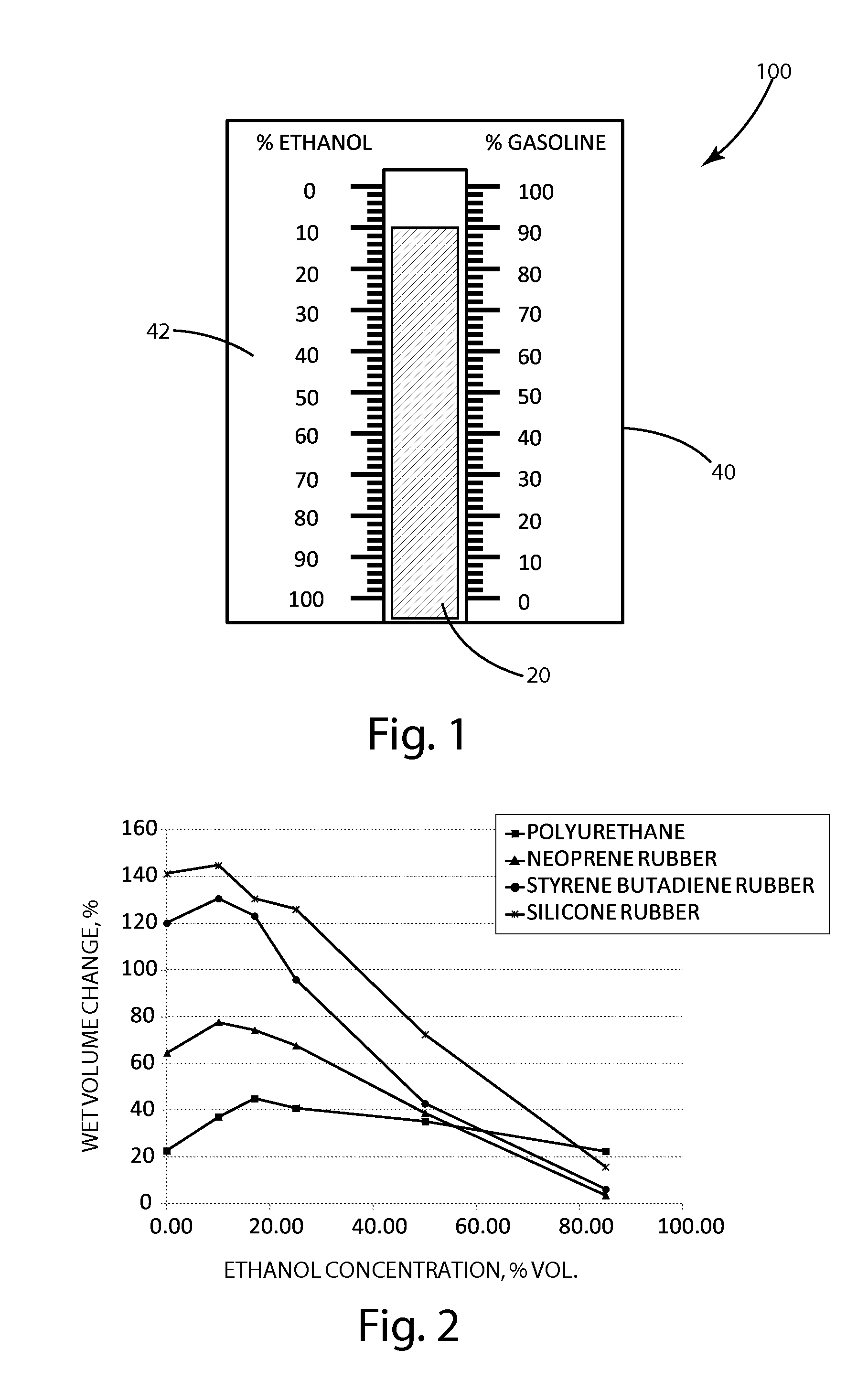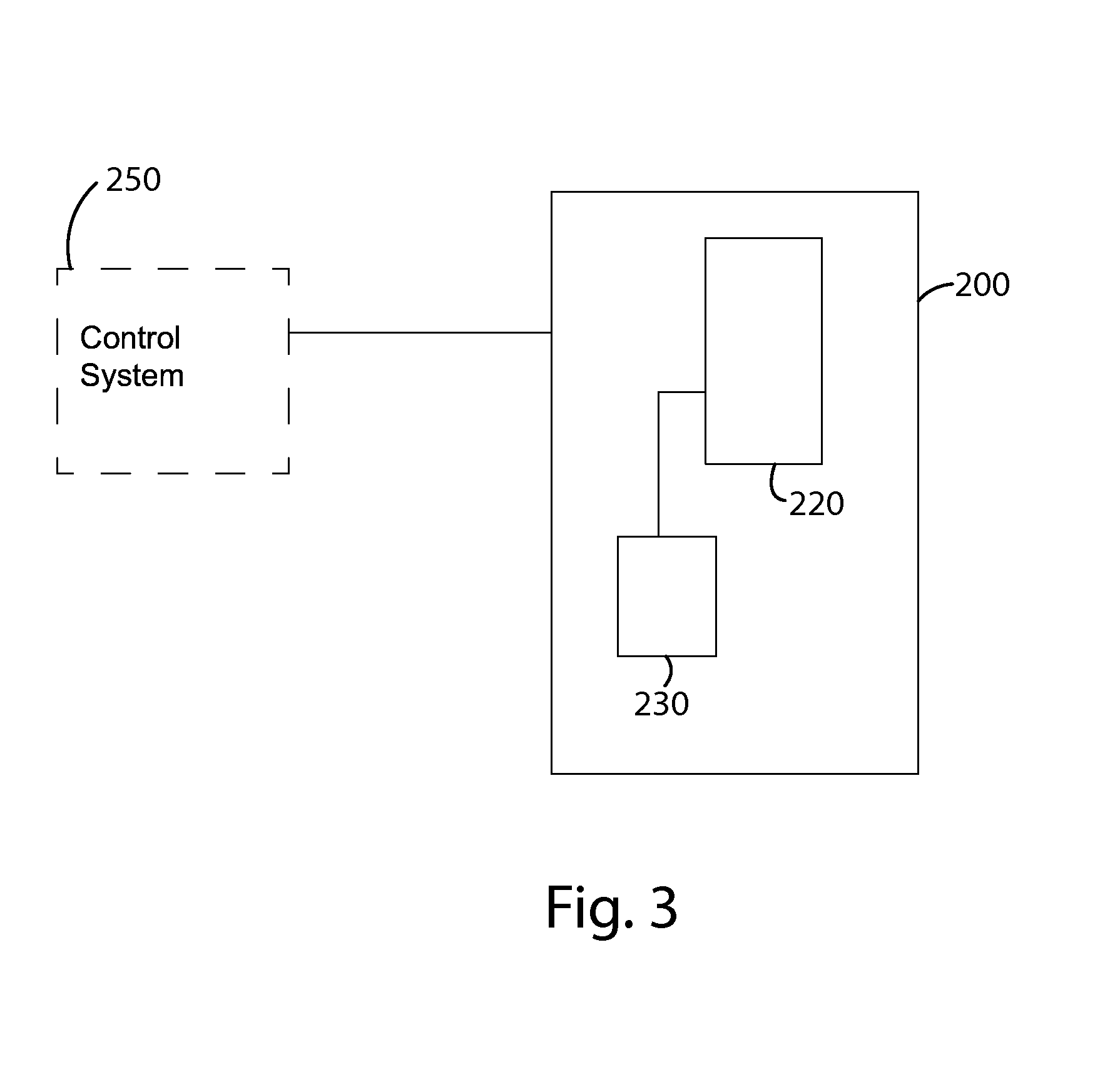System for determining biofuel concentration
a biofuel concentration and biofuel technology, applied in the field of biofuel concentration determination, can solve the problems of inability to accurately detect the presence or concentration of biofuel in the fuel, the conversion process is expensive and labor-intensive, and the incompatibility of conventional engine systems with biofuel blends, etc., to achieve low cost and simple results
- Summary
- Abstract
- Description
- Claims
- Application Information
AI Technical Summary
Benefits of technology
Problems solved by technology
Method used
Image
Examples
first embodiment
A. First Embodiment
[0020]A measurement device in accordance with one embodiment is shown in FIG. 1 and designated 100. The measurement device 100 may include a responsive material 20 configured to aid in measuring a biofuel concentration of a fuel blend. The responsive material 20 may change dimensionally in proportion to changes in biofuel concentration. For example, the responsive material 20 may increase in volume or swell as the percentage of biofuel within a fuel blend decreases. By knowing the relationship between the concentration of biofuel within a fuel blend and a dimensional property of the responsive material 20, the concentration of biofuel may be determined by directly or indirectly measuring a dimensional property of the responsive material 20.
[0021]For example, the plot in FIG. 2 shows an experimentally determined relationship between ethanol content in gasoline and volume for a variety of responsive materials, including polyurethane, neoprene rubber, styrene butadie...
second embodiment
B. Second Embodiment
[0027]Turning now to FIG. 3, a measurement device in accordance with another embodiment is shown, and designated 200. The measuring device 200 may be similar to the measuring device 100 but with several exceptions. The measuring device 200 may include a responsive material 220 similar to the responsive material 20 described with respect to the illustrated embodiment of FIG. 1. For example, the responsive material 220 may be formed of silicone rubber configured to change in proportion to changes in biofuel concentration, such as by changing dimensionally in response to changes in biofuel concentration.
[0028]The measuring device 200 may also include a sensor 230 configured to provide an output based on one or more properties of the responsive material 220, which may be sensed directly or indirectly. Because these properties may be proportional to the biofuel concentration, measurements conducted by the sensor 230 may be used as a basis for providing an output corre...
PUM
| Property | Measurement | Unit |
|---|---|---|
| concentration | aaaaa | aaaaa |
| thickness | aaaaa | aaaaa |
| volume | aaaaa | aaaaa |
Abstract
Description
Claims
Application Information
 Login to View More
Login to View More - R&D
- Intellectual Property
- Life Sciences
- Materials
- Tech Scout
- Unparalleled Data Quality
- Higher Quality Content
- 60% Fewer Hallucinations
Browse by: Latest US Patents, China's latest patents, Technical Efficacy Thesaurus, Application Domain, Technology Topic, Popular Technical Reports.
© 2025 PatSnap. All rights reserved.Legal|Privacy policy|Modern Slavery Act Transparency Statement|Sitemap|About US| Contact US: help@patsnap.com


